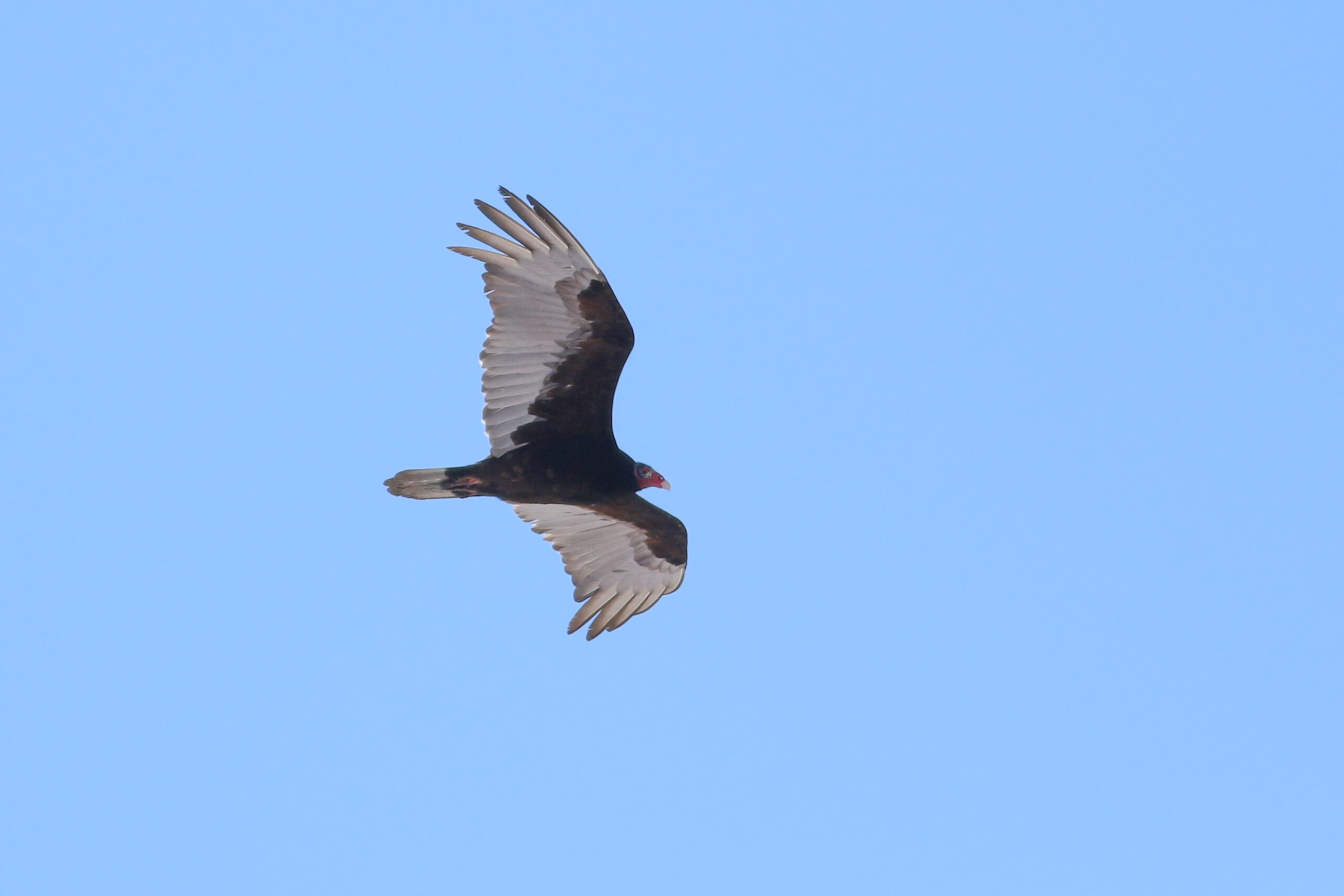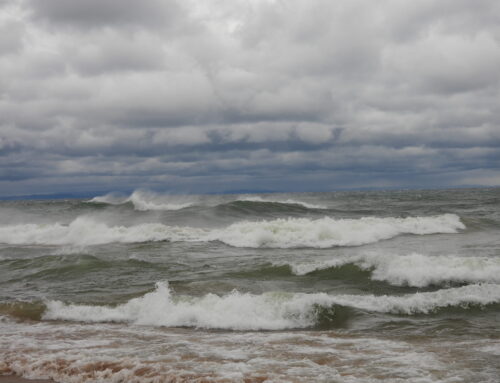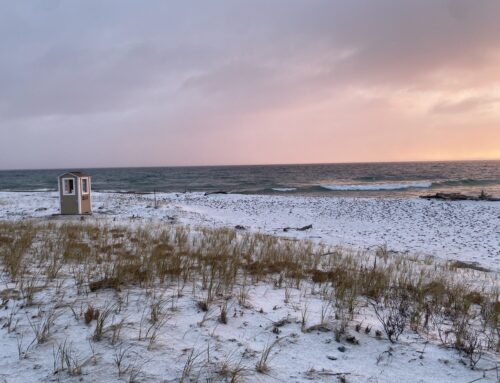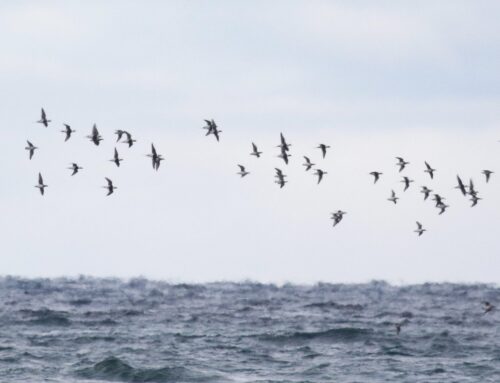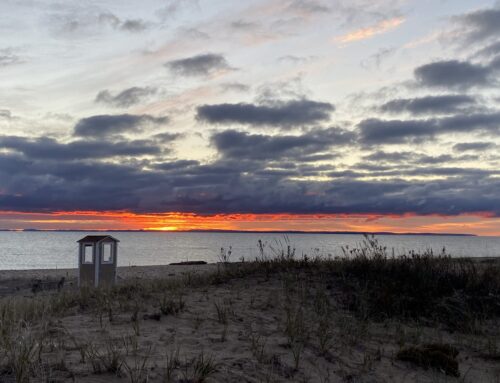The first month of hawk watching at Whitefish Point this season has drawn to a close. Let’s take a look back to see how the numbers from the last two weeks stack up!
Turkey Vulture (1): The first vulture of the year was spotted on March 27, and vulture dances immediately commenced. It is always a spring joy to see the first wobbly dihedral teeter up over the horizon.
Bald Eagle (155): An above-average month for eagles, the peak day was 43 on 3/26. This was the highest March total for Bald Eagles since 2019 and the sixth-highest count ever.
Northern Harrier (1): The only harrier counted passed the Point on the first day of the count, 3/15. Harriers are a Whitefish Point specialty, which is one of the best sites in the Great Lakes to watch their migration. Harriers should peak in mid-April.
Sharp-shinned Hawk (10): A modest count of sharpies. A few adults popped out of the woodwork on warm days, and none seemed in any rush to head north yet.
American Goshawk (7): The highest count since 2018. My personal highlight this month was a few great looks at an adult goshawk that made several passes by the platform on 3/29.
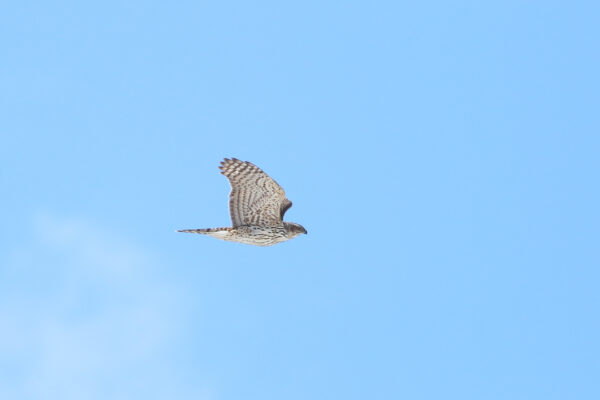
Immature American Goshawk. Photo by Sean McLaughlin
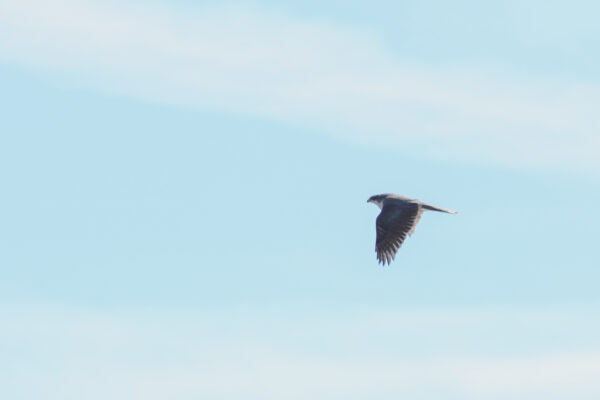
Adult American Goshawk. Photo by Sean McLaughlin
Red-shouldered Hawk (11): The count nudged just over the March average, although seven of these birds were all seen on one day, 3/18!
Red-tailed Hawk (26): One of the most crucial factors in Red-tailed Hawk migration is snow cover; most will stay south until they have ample open ground to hunt to the north. Whitefish Point is currently blanketed in 12+ inches of snow, meaning it may be another week or two until we begin to see larger flights of buteos.
Golden Eagle (38): Highest count since 2016 and comfortably above the long-term average. While Golden Eagle numbers were consistent this month at the Point, our neighbor count at the Mackinac Straits Raptor Watch observed fewer Golden Eagles than average this month.
American Kestrel (1): The first K-bird of the year popped up low on the southeast side of the Point on 3/27. The bright orange and blue of male kestrels adds a wonderful splash of color to early spring.
Merlin (7): March Merlin totals seem to be pretty irregular. Every single Merlin I saw wasted no time, rapidly crossing from horizon to horizon!
Migrant non-raptors have been few in number thus far. Some highlights include small flocks of American Robins, Redpolls, Pine Siskins, and Red-winged Blackbirds. While the waterbird count doesn’t start for another two weeks, several species of fowl passed the deck, including Common, Hooded, and Red-breasted Mergansers, Tundra and Trumpeter Swans, and lots of Herring Gulls.
Counts will continue from the front porch of the Hawk Deck every day until May 31. I’ve been saying it for a few weeks now, but I really do expect flights to pick up in diversity and quantity this next month. Keep an eye on warm fronts, southwest winds, and warmer temperatures to plan your visit to Whitefish Point! Hope to see you there.
~ Sean McLaughlin
2025 Raptor Counter
Featured photo: Turkey Vulture. Photo by Sean McLaughlin
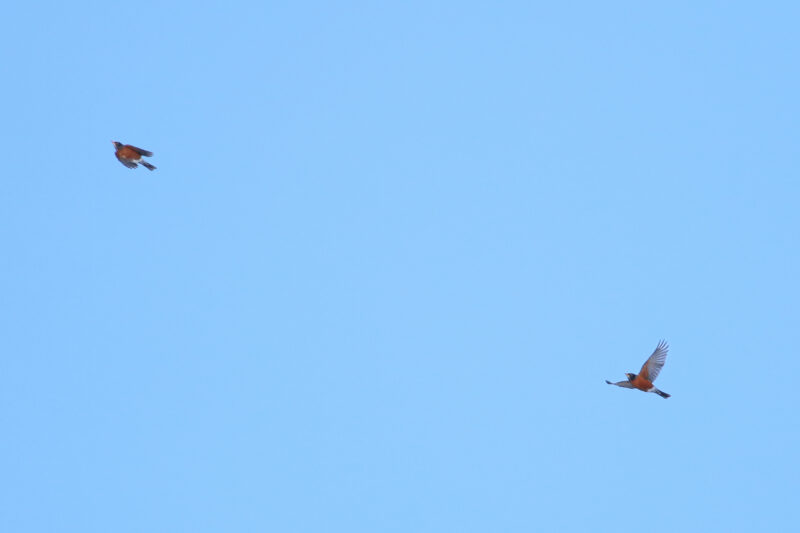
American Robins. Photo by Sean McLaughlin
You can now see the raptor count data on Trektellen! Check it out at trektellen.nl/count/view/4562.
You can keep up with the 2025 Raptor Count by reading Sean’s weekly blog posts and following WPBO’s social media (Facebook, Instagram, and X). The raptor count runs March 15 through May 31.

Sean is a hawk watcher from Pennsylvania, and his passion for raptors began at an early age while visiting nearby count sites. He cut his teeth on the Appalachian Ridges of Stone Mountain and Tussey Mountain before heading to the North Shore of Lake Superior. Since 2022, Sean has conducted spring and fall raptor counts at Hawk Ridge Bird Observatory in Duluth, Minnesota. He is particularly excited to explore the other end of Lake Superior and a different array of spring migrants at Whitefish Point. Sean loves to watch visible migration of birds and has grown particularly interested in morning flight counts of migrating non-raptors. When not watching birds migrate, Sean enjoys fly fishing, gravel biking, and thinking about migration.

